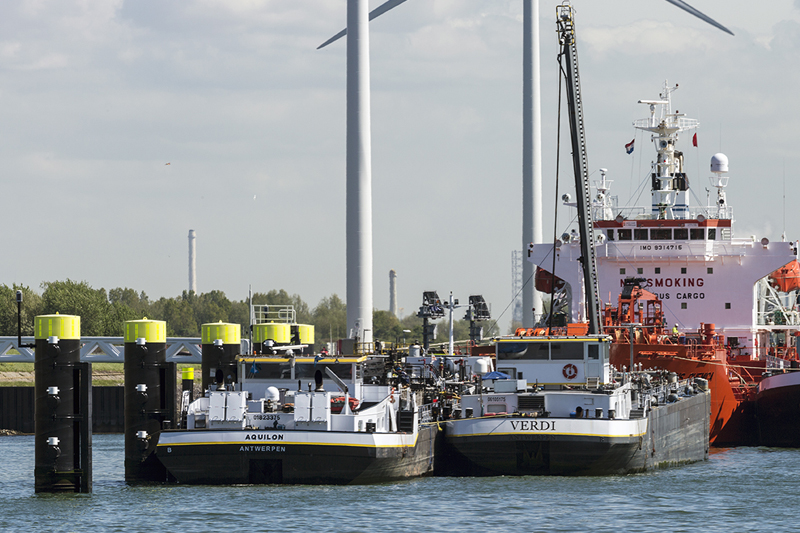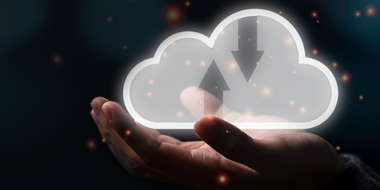Internet of Things (IOT)
Future of the Fourth Industrial Revolution will be powered by the Cloud
30/05/2018 | Written by: Ronald Teijken
Categorized: Cloud | Industries | Internet of Things (IOT) | Watson
Share this post:
It is no longer science fiction – the fourth industrial revolution, or Industry 4.0, is already upon us. A convergence of new technologies including robotics, AI, 3D printing and the IoT, all powered by the cloud and edge computing, is transforming the way we do business. Much the way the Internet, mobile and the PC did in previous decades. These technologies have the potential to improve products, customise experiences, increase productivity, improve safety and reduce costs across many industries, including manufacturing, retail, healthcare and transportation. So how are businesses responding to the challenges and opportunities this new landscape presents?
Enhancing Human Capability with Sensors that can See and Hear
Rather than replacing humans, Industry 4.0 will be focused on enhancing and augmenting human capabilities, creating efficiencies that were never previously possible. One of the most powerful examples of Industry 4.0 at work is in manufacturing. In this context, sensors on the production line can send information to the cloud where the data is then analysed for actionable insights.
One application for these insights is the identification of defects and pre-emptive maintenance, made possible through vast data analysis that goes beyond human capability. Through Cognitive Visual Inspection for example, sensors can find defects smaller than the eye can see while a car is being sprayed, saving hundreds of hours of inspection time.
Sensors can also track acoustic as well as visual cues. By monitoring sound, manufacturers can non-destructively and non-intrusively improve quality and prevent costly equipment downtime. Trained to identify known ‘good’ and known ‘bad’ sounds that could indicate equipment failure, the technology can be deployed on the factory floor to identify both audible sounds and those inaudible to the human ear.
Predicting Problems Before they Happen
One of the most exciting applications of sensors and data analytics is the concept of ‘digital twins’ or virtual modelling. Using data points from sensors, a digital model of a system can be built that enables tests and ‘what if’ scenarios to be carried out safely, rather than taking risks with the physical system. This helps organisations to predict what is likely to happen in a given situation and anticipate potential problems.
Working with the Port of Rotterdam, IBM will help create a digital twin of the city’s port, together with leading technology partners Cisco and ESRI. Unlike the digital twin model commonly known within the industry 4.0 context, this digital twin is an exact digital replica of its operations that will mirror all resources at the port, tracking ship movements, infrastructure, weather, geographical and water conditions with 100% accuracy.
As part of this project, the port will digitize a number of critical objects, like dolphins and quay walls that generate time-stamped data about their status and environment. The digital dolphins for example, will provide insights into the condition and utilisation of a berth and the surrounding water and weather conditions. Enabling the harbour master to identify the optimal time for ships to dock, and where and when they can do so. Machine learning will be applied to learn from data patterns so that port operators will be able to rely on 100% accurate, real-time data about the port’s infrastructure.
By predicting water and weather conditions, the port will be able to predict how smooth a ship’s entry is likely to be. Through more efficient operations, the port will be able to increase the volume and efficiency of shipped goods that pass through it, while lowering the environmental footprint.
Data will Fuel the Next Revolution
None of these innovations would be possible without the cloud. All of the sensors involved are gathering a vast amount of data on anything from factory floor humidity to equipment vibration, the rumblings of machines and their temperatures, and so much more. With 31 billion IoT devices expected to be in use by 2020[1], the volume of data gathered will be vast. Much of this data will be gathered in the cloud, analysed in real-time and used for insights and learnings to make efficiencies and improvement.
When processing so much data from so many points however, security is a major factor to consider. Security was an afterthought for many early generation IoT applications, creating vulnerabilities in the network and the potential for industrial process interruption, manipulation or espionage.
It is important to ensure stringent security policies are in place therefore, with strict controls over who can access and manage the data. Organisations operating internationally must also ensure that they can automate and scale security and access management across diverse geographies. Those that do not have stringent security in place could leave themselves vulnerable to hacking. With such a variety of IoT devices and sensors in place, there is a much larger surface to protect. Possible attacks on IoT systems can include obtaining private or confidential data, manipulating or controlling devices, or denying service to applications that use and supply this data.
Any organisation implementing IoT should ensure they are working with a cloud provider that puts the security of their data first. With the Watson IoT Platform powered by IBM Cloud for example, users can be reassured that they benefit from robust Identity and Access Management (IAM) controls as well as compliance with the latest security standards including ISO 27001 and the EU Cloud Code of Conduct.
Security concerns aside, we are on the cusp of a major digital revolution that is set to transform industry as we know it. Whether you need to reduce downtime, improve product quality or streamline asset maintenance, Industry 4.0 is undoubtedly the way forward. As the connected technologies of IoT, AI and robotics converge, all underpinned by a secure cloud, there is a world of possibility ahead that has already started today.
You want to experience more local stories? Join us 4 or/and 5 October (your choice) and register for Think Brussels.
[1] Statista: https://www.statista.com/statistics/471264/iot-number-of-connected-devices-worldwide/

Business Partner Manager Netherlands @ IBM for Asset management, Internet of Things, Supply Chain and AI.
Being a data driven organization: What does this mean at Allianz?
Reading Time: 8 minutes From calculating risks and premiums to understanding customer behavior, data is of vital importance in the insurance business. Allianz, a multinational financial services company that focuses on insurance and asset management, has recently transformed its operations on a data level to reinvent its insurance business. Read an extract from a recent […]
IBM-onderzoek: één leverancier voor Cloud is achterhaald
Branche gerelateerde regelgeving wordt gezien als een belangrijk obstakel voor Cloud adoptie door 68 procent van de respondenten. Eén derde van de respondenten ziet security niet als topprioriteit ondanks cyberaanvallen. Uit nieuw wereldwijd onderzoek van IBM (blijkt dat er een drastische verschuiving heeft plaatsgevonden in de zakelijke behoeften van Cloud omgevingen. Slechts één procent […]
Take out complexity and deliver business value with hybrid multicloud
Taking cloud to scale has proven a challenge for many organizations. 60% of European organizations are still running their business-critical application on-premise, and have not yet moved the majority of applications in a hybrid or multicloud architecture, according to IDC’s 2021 Multicloud survey of 925 IT and business decision makers from across Europe from […]



